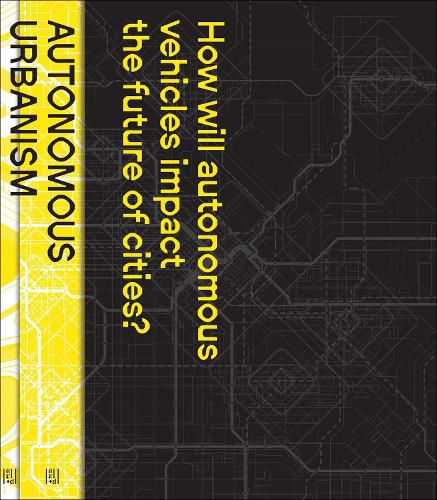Readings Newsletter
Become a Readings Member to make your shopping experience even easier.
Sign in or sign up for free!
You’re not far away from qualifying for FREE standard shipping within Australia
You’ve qualified for FREE standard shipping within Australia
The cart is loading…






Automated vehicles (AVs) are beginning to appear on our roads. Their arrival represents the next disruptive technological innovation to our mobility systems.
In a moment in which the contemporary conversation around driverless technology largely neglects its longer-term spatial implications, this book argues that AVs offer a major opportunity to rethink the design and evolution of our city's built environments-with profound implications on urban life, infrastructure, and form since automobiles replaced horse-powered travel and changed the design of cities in the prior century. Driverless vehicles also carry with them however, the distinct risk to reinforce many of the negative externalities brought by 20th-century automobile-based urbanism including urban sprawl, mono-functional mobility infrastructures, traffic congestion, and environmental degradation. Instead, this book proposes a vision for our cities in which AVs have been used to spur a mobility paradigm shift from private automobile use towards automated mass transit and mobility as a service-using the city of Los Angeles as a testbed.
To take up these charges, this book is structured through two companion volumes: one that deploys the unique format of a graphic novel to depict a narrative experience of this future city through the eyes of the everyday public, and one that lays the framework for that speculative future to potentially occur, grounding it in our recent urban mobility history, transportation policies, and typological spatial implications at multiple scales. In envisioning this potential urban future and delineating the foundational design and policy steps towards achieving it, this book contends that there is hope in transitioning cities from the Autopias of today, to the Transitopias of tomorrow. This is a big shift. Are cities and their inhabitants ready?
$9.00 standard shipping within Australia
FREE standard shipping within Australia for orders over $100.00
Express & International shipping calculated at checkout
Automated vehicles (AVs) are beginning to appear on our roads. Their arrival represents the next disruptive technological innovation to our mobility systems.
In a moment in which the contemporary conversation around driverless technology largely neglects its longer-term spatial implications, this book argues that AVs offer a major opportunity to rethink the design and evolution of our city's built environments-with profound implications on urban life, infrastructure, and form since automobiles replaced horse-powered travel and changed the design of cities in the prior century. Driverless vehicles also carry with them however, the distinct risk to reinforce many of the negative externalities brought by 20th-century automobile-based urbanism including urban sprawl, mono-functional mobility infrastructures, traffic congestion, and environmental degradation. Instead, this book proposes a vision for our cities in which AVs have been used to spur a mobility paradigm shift from private automobile use towards automated mass transit and mobility as a service-using the city of Los Angeles as a testbed.
To take up these charges, this book is structured through two companion volumes: one that deploys the unique format of a graphic novel to depict a narrative experience of this future city through the eyes of the everyday public, and one that lays the framework for that speculative future to potentially occur, grounding it in our recent urban mobility history, transportation policies, and typological spatial implications at multiple scales. In envisioning this potential urban future and delineating the foundational design and policy steps towards achieving it, this book contends that there is hope in transitioning cities from the Autopias of today, to the Transitopias of tomorrow. This is a big shift. Are cities and their inhabitants ready?